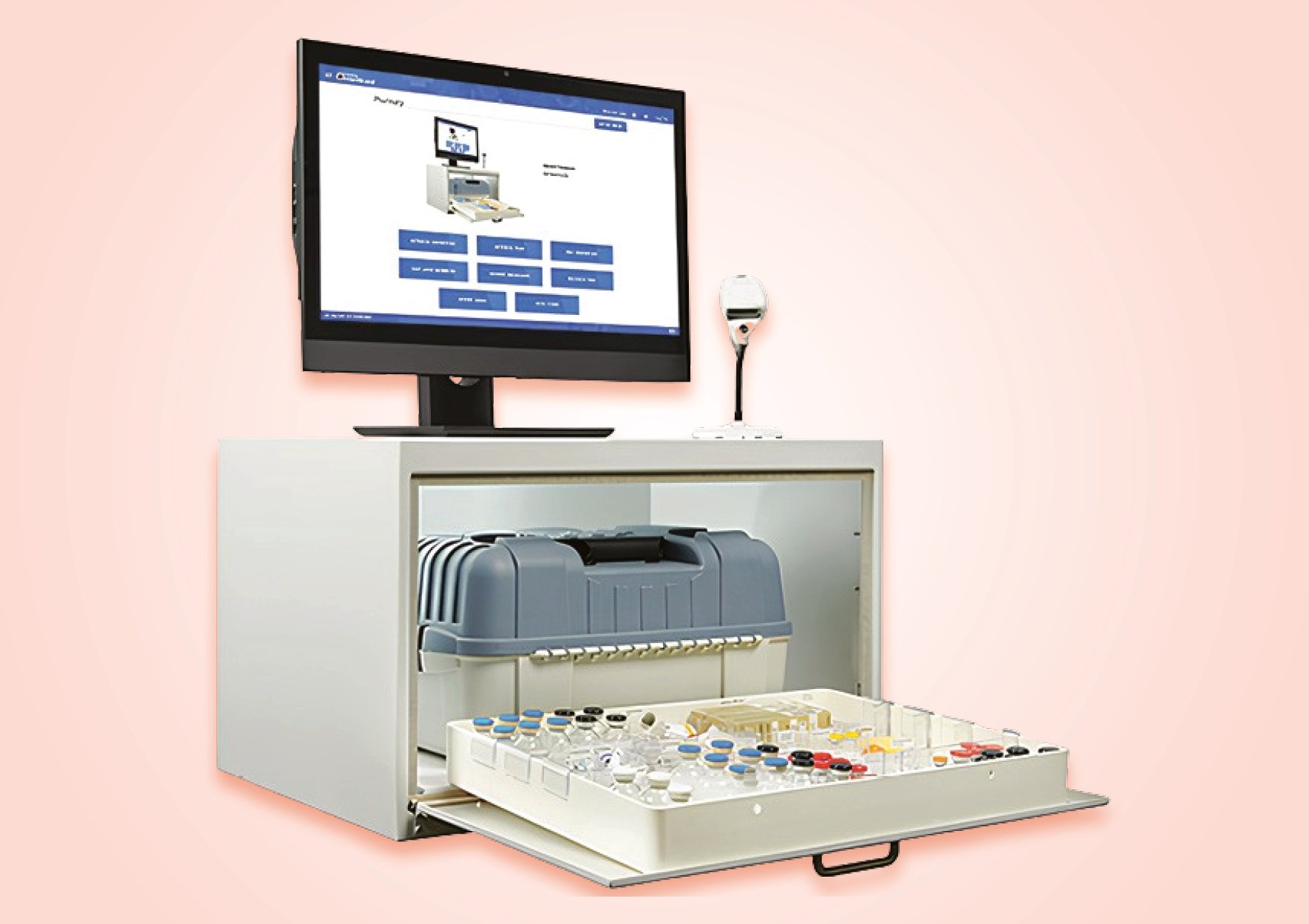- Show Menu
- Contact Us
- FAQs
- Reader Service
- Survey Data
- Survey Winners
- Testimonials
- Upcoming Events
- Webinars
- White Papers
Implementing a Drug Distribution System in a 22-Suite Operating Room
THE UNIVERSITY HEALTH NETWORK (UHN) COMPRISES THREE TEACHING hospitals: the Toronto General Hospital (TGH), Toronto Western Hospital (TWH), and Princess Margaret Hospital (PMH). Our hospitals share a tradition of great outcomes with seven distinct programs for the delivery of patient care: advanced medicine and surgery, community and population health, heart and circulation, neuroscience, multi-organ transplant, musculoskeletal health and arthritis, and oncology and blood disorders.
The operating room (OR) at Toronto General Hospital has 22 OR suites, and a multidisciplinary team provides care to our patients requiring surgical interventions. The types of surgeries performed include minimally invasive procedures (i.e. laparoscopic surgery), surgical oncology (head/neck, gynecological, urology, and hepato-biliary), cardiac and vascular surgery, and multi-organ transplants. The OR is an environment where changes in technology are constant. The TGH OR was reconstructed in a new and expanded location in 2002, with a cutting-edge design including a highly technical communication system (touch screen paging system) and video cameras that display real-time surgery. At that time, the OR drug distribution method was the traditional ward stock system. There were three different sets of OR drug carts. The first cart was stocked with drugs used in the general OR suites. The second was stocked with drugs used mainly in the cardiac surgery suites. The third was stocked primarily with anesthesia drugs. The OR staff was responsible for restocking each OR suite daily, using drugs from the OR carts, which had been sent from the pharmacy. Narcotics and controlled drugs were stocked manually in a double-locked cabinet, using a manual inventory
sheet for dispensing. This system was prone to the following flaws:
- Inventory overstocking, stocking out, and misplacement
- Presence of expired drugs
- No tracking of drug use and drug waste
- Complicated documentation procedures for narcotic and controlled drug use
- Lack of routine quality monitoring
To achieve and maintain efficiency and better control for narcotics and other medications, a pharmacy-led team implemented a unit-based automated medication dispensing system, in conjunction with a 24-hour anesthesia tray exchange program to service the 22-suite OR.
Methods
A phased approach was used to develop, implement, and test the efficiency of this project. The initial business proposal was submitted to the Anesthesia Business Unit Committee, which consists of anesthetists, the site executive director of operations, the pharmacy manager, the director of nursing, OR nurse managers, respiratory technologists, and other allied health staff, for the installation of the three unit-based automated medication dispensing cabinets along two sterile corridors. After the automated cabinets were implemented, another proposal was submitted for a pharmacy technician to conduct the 24hour anesthesia tray exchange program for each OR suite. The final step was to scale down the stock in the OR drug carts. One of the important focuses during the entire process was to ensure buy-in from and the confidence of key stakeholders, especially anesthetists and respiratory technologists, and to involve them in every aspect of the planning and implementation.
Phase I:
The first phase in the implementation was to establish a dedicated unit-based automated medication dispensing cabinet for narcotics with exclusive privileges to anesthetists. Each anesthetist has accountability for the removal and return of narcotics and controlled drugs via this cabinet for use in the OR suite.
Phase II:
In the second phase, pharmacy condensed and reconfigured the stock from three large OR drug carts into two unit-based automated medication dispensing cabinets and two smaller OR carts for large/bulky medications, such as dopamine IV bags.
Phase III:
The final stage in the implementation involved the pharmacy-controlled anesthesia tray exchange system, in which a full-time designated pharmacy technician exchanges anesthesia trays for each OR suite every 24 hours for six days a week, with no exchange on Saturday. For Saturdays and other times outside of the pharmacy exchange schedule, spare OR anesthesia trays are made available in the unit-based automated medication dispensing cabinet by the pharmacy OR technician, in case a new tray is required before the next exchange.
Drugs available in the anesthesia tray were removed from the anesthesia OR drug carts. While it was a challenge to build the OR staff’s confidence in the new system, the appropriateness and accuracy of the drug inventory of each anesthesia tray ultimately led to the success of our new drug distribution model.
Multi-disciplinary cohesiveness and support from hospital administration were essential in this implementation. Achieving buy-in from all stakeholders was crucial, since workflow, work habits, and the process of obtaining medications would change. Benefits had to be clearly identified, especially:
- Cost savings
- Added security and safety
- Ability to track medications
- Results
From the business proposal to the go-live date of the final phase, the entire project took two years to complete. Pharmacy provides routine quality audits to assure that there are no expired drugs in the OR drug carts, trays, and unitbased automated dispensing cabinets. Our holding inventory costs were reviewed by the pharmacy management team before phase I and after the implementation of phase III, and a significant cost reduction of 30% was found. Pharmacy monitoring and re-stocking of inventory has lead to a significant drug cost avoidance from wastage – a reduction of 86.7% compared to the previous OR drug carts system. Narcotics and controlled drug documentation can be easily tracked and returns reconciled. High-cost drugs can be monitored and tracked.
The evidence clearly supports and verifies that a unit-based automated medication dispensing system, in conjunction with a 24-hour anesthesia tray exchange program, can be successfully implemented in a restricted-access OR environment, resulting in significant cost avoidance by reducing drug waste and inventory. Implementation of this system required the standardization of medicationrelated practices, which was achieved through early and ongoing involvement on the part of all stakeholders. System tracking allows high-cost-drug usage reports generation. These reports are used as a continuous quality improvement tool upon the Anesthesia Business Unit Committee’s review of drug use. This also has lead to a more structured and more controlled drug distribution system in our OR. A safer system has been achieved.
AUTHOR:
Esther Fung, BSc, MSc, Phm Manager, Pharmacy Site Operations Toronto General Hospital, University Health Network Toronto, Ontario
Like what you've read? Please log in or create a free account to enjoy more of what www.pppmag.com has to offer.








